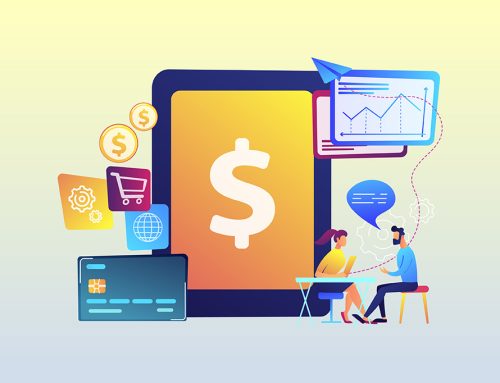The way users engage with websites has changed over the past five years.
More specifically, people are using voice commands for searches today, indicating that new web development trends are emerging.
The newest methods for developing and enhancing online applications are known as web development trends.
As new technologies are developed and customer preferences change, these trends also keep evolving.
However, they strongly focus on accessibility and responsiveness to give users the greatest experiences possible.
The way websites are developed is being revolutionized by several new web development trends that have emerged in recent years.
As you may have seen, people are more demanding than ever before when it comes to convenience, personalized experiences, and customization.
As a result, voice search is being used along with the integration of virtual reality and the usage of artificial intelligence.
In this article, we will examine the latest web development trends in 2024.
Let’s find out what they are and how they work.
7 Best Web Development Trends 2024
Let’s discuss some of the web development trends that are expected to have significant impacts on industry standards and web development strategies in 2024 and beyond.
1. AI Features in Apps
In the recent several years, marketing teams have utilized ChatGPT and other similar applications more frequently to help with the creation of website content, including images and copy, to accelerate production.
In 2024, this popularity will continue to grow with custom AI-powered chatbots taking the place of more traditional customer support methods like support portals and documentation pages.
Therefore, if they want to include this feature in their apps, developers will need to become proficient in using and communicating with LLMs programmatically.
2. Blockchain Integration
Blockchain integration provides decentralized and secure solutions for web development that extend beyond cryptocurrency. Blockchain-powered smart contracts facilitate trustless transactions and remove intermediaries from processes.
Furthermore, to develop decentralized apps (dApps) and tokenized assets, developers are exploring blockchain systems like as Ethereum, Hyperledger, and Polkadot.
Solutions for data storage and authentication based on blockchain technology improve security and transparency in online applications, attracting customers worried about data integrity and privacy.
3. Serverless Architecture
Function as a Service (FaaS), also referred to as serverless architecture, separates infrastructure management so that developers may concentrate on creating functions or microservices. Serverless platforms are offered by cloud providers such as AWS Lambda, Azure Functions, and Google Cloud Functions.
These platforms dynamically grow according to demand, which reduces costs and operational overhead. Serverless architectures perform very well where computational resources are allocated dynamically, such as in backend tasks, event-driven apps, and APIs.
Developers may use serverless features like pay-per-use pricing, scalability, and rapid deployment to create scalable and affordable online apps without having to manage traditional server settings.
4. Motion UI & Microinteractions
Motion UI is the process of improving web interfaces’ visual appeal and user engagement by adding animations, transitions, and micro-interactions. Microinteractions that give feedback and smoothly direct user engagements include loading indicators, hover effects, and button animations.
Moreover, developers may design dynamic, responsive interfaces that enhance usability and delight users by utilizing JavaScript libraries like Anime.js or GSAP, CSS animations, and UI frameworks like Material Design.
Motion UI aims to convey information and provide easy interactions to improve the user experience overall.
5. Dark Mode
The usage of dark mode in online design and development is rising in popularity because it provides users with an alternate color scheme that is lighter on the eyes, particularly in areas with low lighting.
Moreover, dark mode options are being added by web developers to their websites and applications to accommodate user preferences and enhance readability. Dark mode interfaces have a modern and visually appealing design, usually with light text and accents on dark backgrounds.
Dark mode offers more advantages including extending the battery life of gadgets with OLED or AMOLED screens.
Additionally, dark mode maintains accessibility guidelines, helping users with visual impairments by enhancing contrast and reducing glare, making information more readable and accessible.
6. TypeScript Adoption
The use of TypeScript has increased recently as developers look for a more reliable and organized method for developing JavaScript.
Microsoft’s TypeScript enhances JavaScript with advanced features like interfaces, generics, static typing, and more, making codebases more error-free, scalable, and manageable.
In addition, it has become widely used in web development projects due to its compatibility with JavaScript libraries and frameworks like React, Angular, and Vue.js.
Further, the strong type system of TypeScript detects errors at the time of compilation, improving code quality and developer efficiency.
With TypeScript, developers can take utilize of the latest ECMAScript features and benefit from type-checking and tooling support, leading to online applications that are more dependable and efficient.
7. Headless CMS Architecture
In 2024, headless CMS architecture is expected to be a major and emerging trend as companies look for more flexibility, efficient content delivery, and more security in web development.
The concept behind Headless CMS Architecture is to keep the front-end display layer and content management system (CMS) separate. It gives you more authority as a developer to create and modify the layout of the website.
Moreover, the content of a headless CMS may be accessed and seen on any device or application as it is stored separately in a central repository.
Additionally, businesses can now provide content across platforms and devices with ease without having to modify the content itself because of the decoupling of presentation and content.
Headless CMS designs also provide enhanced security and scalability because they don’t store any presentation logic on the server, reducing the risk of security breaches.
Final Thoughts
The web development industry will certainly see some amazing changes in 2024.
The future of web development appears to be brighter than ever, with new technologies and security frameworks being implemented along with the ongoing integration of AI.
Additionally, the focus on voice search optimization, PWAs, blockchain, AI integration, and other cutting-edge technologies emphasizes how crucial it is to keep up with the latest trends in technology.
By using these trends, WeCreative can design and develop visually attractive, highly functional, secure, and user-friendly websites and web apps for your business.
Contact us now to get the best web development services.
FAQs
What is the future of web development in 2024?
In 2024, the web development industry will see the rise of exciting new trends and technologies. AI and Machine Learning make smarter, more personalized websites possible. User experiences are being augmented and the digital and physical worlds are being connected through Augmented Reality (AR) as well as the Internet of Things (IoT).
Will AI replace web developers in the future?
AI won’t take the place of web developers. For example, WordPress is a popular web development software. A few years ago, several experts predicted that it would replace human web developers in the workforce. Now, as you probably already know, it didn’t actually happen.
What is the trend in web technology in 2024?
In 2024, there are several developments in web technology, including serverless architecture, the rise of animated user interfaces, and the use of dark mode and artificial intelligence (AI) features and functionality. As a developer, you may always pick up and apply a new trend, regardless of your area of expertise.
What is the latest technology for web development?
In the past several months, web development has seen a rise in the use of several new technologies, such as AI-powered tools that increase developer productivity. Current tools, such as the Serverless and Jamstack architectures, have also become more popular.
What is modern website development?
Although the exact definition of modern website development is difficult to give, a modern website would probably make use of many various technologies, such as serverless functions and the Jamstack architecture, to give apps scalable backend abilities.


